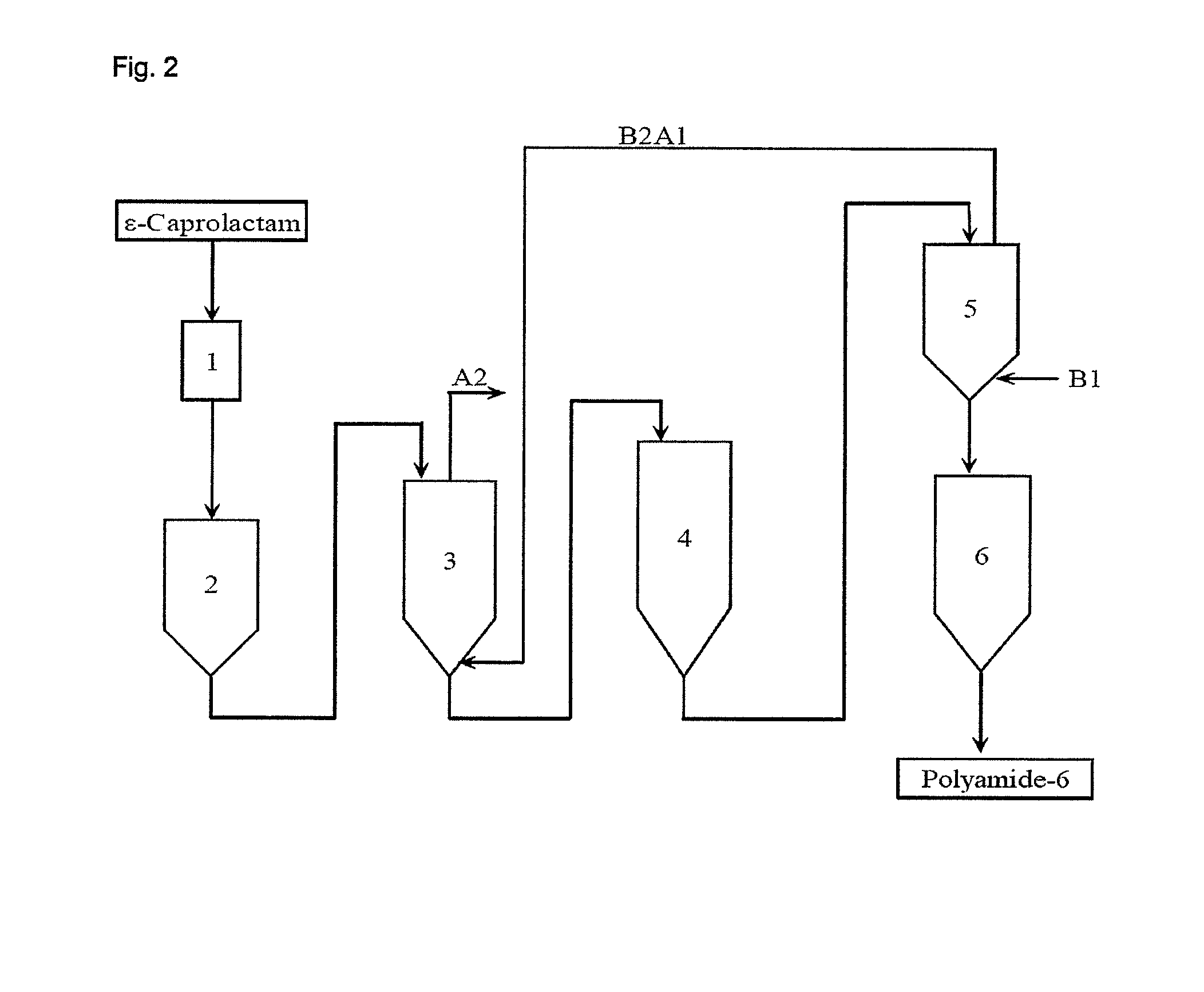Preparation of polyamides by hydrolytic polymierization and multiple extraction
a polyamide and hydrolysis technology, applied in the field of polyamide preparation, can solve the problem of unattainable residual monomer content of polyamides, and achieve the effect of low residual monomer conten
- Summary
- Abstract
- Description
- Claims
- Application Information
AI Technical Summary
Benefits of technology
Problems solved by technology
Method used
Image
Examples
example 1
[0130]The feedstock used was polyamide-6 pellets produced on the industrial scale, having a viscosity number of 218 ml / g and a monomer content of 0.23%. The polyamide-6 pellets were produced via the process steps of preliminary reaction in the pressure reactor, melt polymerization in the VK tube, hot water extraction and heat treatment. 300 g of pellets were introduced into a 2 l reactor and extracted at 95° C. with 1000 g of water while stirring over 24 h. The extracted pellets were dried in a vacuum drying cabinet under a nitrogen blanket over 16 hours. The monomer content thereafter was 0.04%.
example 2
[0131]The feedstock used was polyamide-6 pellets produced on the industrial scale, having a viscosity number of 251 ml / g and a monomer content of 0.24%. The polyamide-6 pellets were produced via the process steps of preliminary reaction in the pressure reactor, melt polymerization in the VK tube, hot water extraction and heat treatment. 450 g of pellets were introduced into a 2 l reactor and extracted at 105° C. with 1500 g of water while stirring over 24 h. The extracted pellets were dried in a vacuum drying cabinet under a nitrogen blanket over 16 hours. The monomer content thereafter was 0.03%.
examples 3-5
[0132]The feedstock used was polyamide-6 pellets produced on the industrial scale, having a viscosity number of 218 ml / g and a monomer content of 0.23%. The polyamide-6 pellets were produced via the process steps of preliminary reaction in the pressure reactor, melt polymerization in the VK tube, hot water extraction and heat treatment. 625 g of pellets were introduced into a 2 l reactor and extracted at 95° C. while stirring with water over 30 h. In the course of this, the water was exchanged continuously at a flow rate of 2 l / h. Three 80 g fractions were taken from the extracted pellets, and these were dried successively in a drying apparatus. The drying apparatus consisted of a glass tube with a frit base, which was heated by means of an outer jacket. 80 g of pellets were introduced into the preheated glass tube, and hot nitrogen flowed through it over a particular residence time. After the residence time, the pellets were removed.
Drying Conditions:
[0133]
ExampleExampleExample345R...
PUM
| Property | Measurement | Unit |
|---|---|---|
| temperature | aaaaa | aaaaa |
| temperature | aaaaa | aaaaa |
| diffusion distance | aaaaa | aaaaa |
Abstract
Description
Claims
Application Information
 Login to View More
Login to View More - R&D
- Intellectual Property
- Life Sciences
- Materials
- Tech Scout
- Unparalleled Data Quality
- Higher Quality Content
- 60% Fewer Hallucinations
Browse by: Latest US Patents, China's latest patents, Technical Efficacy Thesaurus, Application Domain, Technology Topic, Popular Technical Reports.
© 2025 PatSnap. All rights reserved.Legal|Privacy policy|Modern Slavery Act Transparency Statement|Sitemap|About US| Contact US: help@patsnap.com


